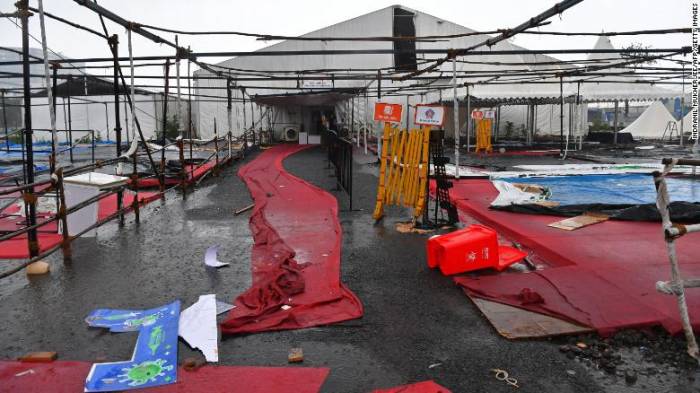Tens of thousands of people evacuated as Severe Cyclone Tauktae made landfall on India’s western coast. Before it made landfall in Gujarat, India, Tauktae caused widespread damage to regions in its path. Visuals from Twitter show the cyclone’s intensity as high tidal waves slammed Mumbai’s seafront and trees got uprooted.
गेट वे ऑफ इंडिया#TauktaeCyclone pic.twitter.com/vMS9Cn1ZRJ
— Parimal Kumar (@parimmalksinha) May 17, 2021
#CycloneTaukte: Waves lash over onto a shoreline at the Gateway of India in Mumbai on Monday.#CycloneTauktae #CycloneTauktaeupdate #Mumbai #MumbaiWeather
LIVE updates here: https://t.co/DXANj2etWg
(📸: Santosh Bane/BCCL) pic.twitter.com/N0NwD3gDz4
— The Weather Channel India (@weatherindia) May 17, 2021
Cyclone Tauktae and Climate Change
With the increase in global heating, intense cyclones, previously less common, are becoming a norm for South Asia. Exactly a year ago, Super Cyclone Amphan ravaged coastal Bangladesh and West Bengal.
Cyclone Tauktae’s record backs the fact that cyclones are increasing due to climate change. Since satellite records began in India in 1980, this is the first time that pre-monsoon cyclones have been recorded in the Arabian Sea for four consecutive years. It is now a well-known fact that the global ocean has absorbed 90% of the excess heat generated by greenhouse gas (GHG) emissions since 1970. This has led to anomalous ocean warming, which in turn makes cyclones intensify rapidly.
For the first time in satellite era (1980 onwards), 4 consecutive years (2018,2019,2020 and 2021) will see cyclone in the Arabian Sea in pre-monsoon season (April-June). Attached satellite pic showing the system organizing in the Arabian Sea. Data and satellite image credits:IMD pic.twitter.com/fcqDobOqzi
— vineet kumar (@vineet_tropmet) May 14, 2021
1/ Arabian Sea used to be cool, but now it’s a warm pool—supporting more intense cyclones. Tropical cyclones draw their energy from the warm waters—a reason why they form over the warm pool regions where temperatures are above 28°C.
More on WIO warming: https://t.co/2jieMud3Ac pic.twitter.com/lAjKwwMiDz
— Roxy Koll ⛈ (@rocksea) May 12, 2021
India having to handle a global health pandemic AND prepare for intense cyclones is not the future (or the present) we want.

A coronavirus vaccination center in Mumbai, India, with part of its entrance hallway blown away by strong cyclone winds on May 17.
Photo: CNN
In Mumbai, India’s financial capital, patients had to be transferred to nearby hospitals from COVID-19 care centres at risk from the cyclone. Cyclone Tauktae couldn’t have come at a worse time for India, which is already grappling with a devastating second wave of the COVID-19 that has left hospitals congested and people unable to access oxygen. More than 266,207 people have already died from the virus and vaccinations had to be paused.
#CycloneTauktae: Several ambulances have been stationed at BKC’s jumbo COVID center. In case of emergency, patients will be transferred to nearby hospitals. pic.twitter.com/PgH70NOVnE
— TOI Mumbai (@TOIMumbai) May 15, 2021
This is not the first time India has dealt with a climate-induced disaster during the pandemic. Last year, it also faced deadly cyclones that prompted mass evacuations. A just recovery that addresses these multiple crises is needed.